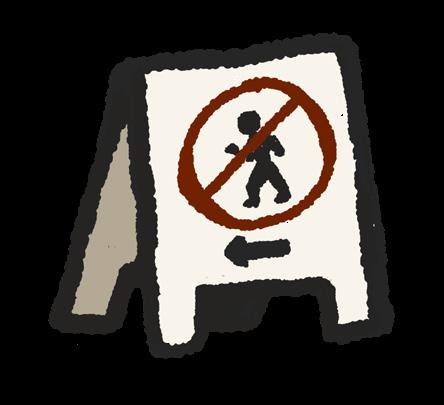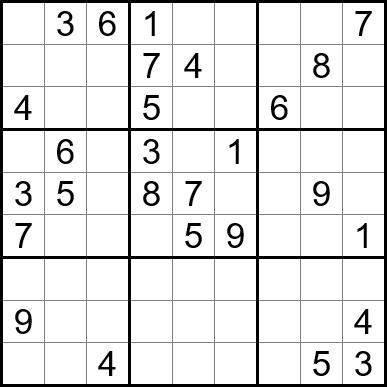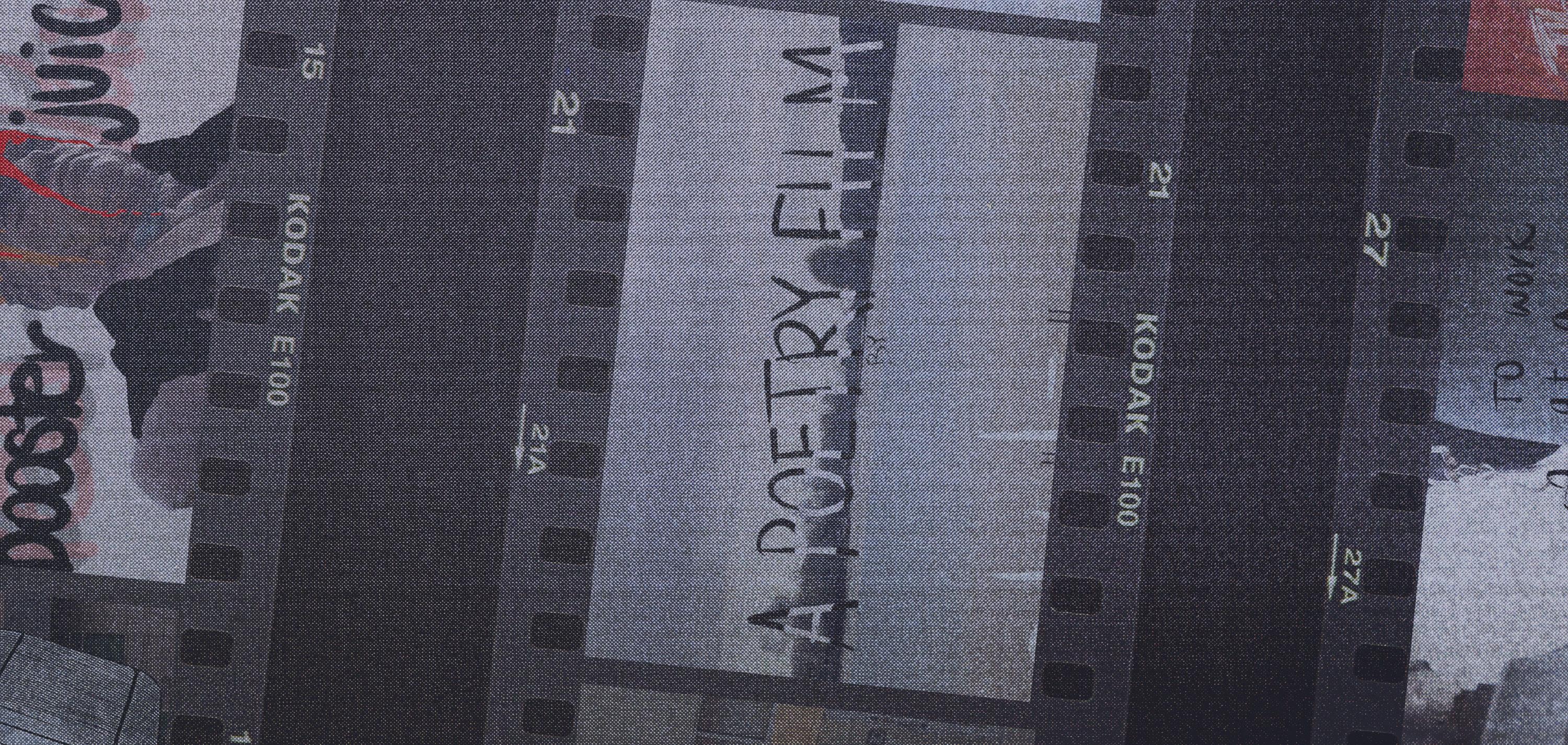
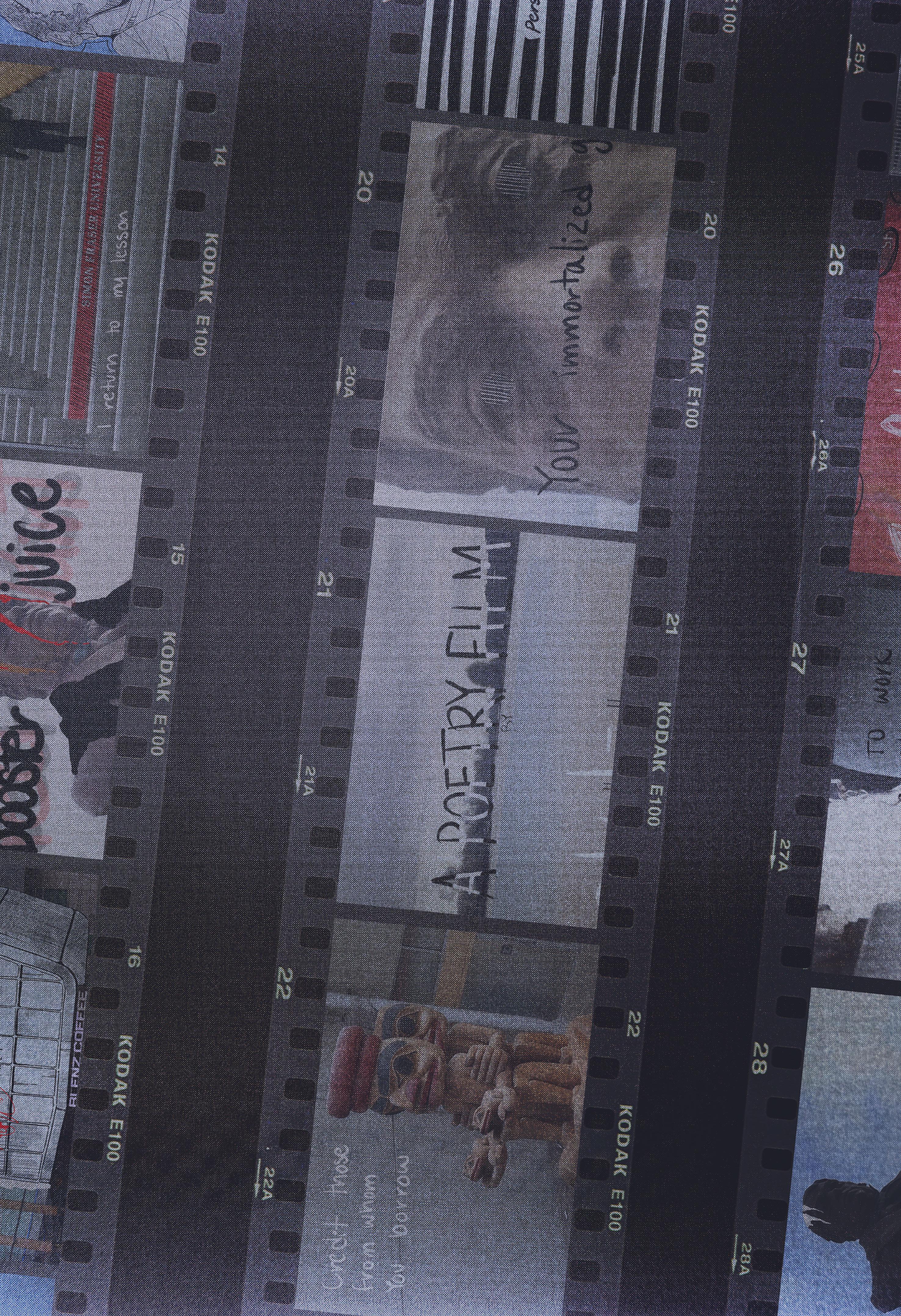





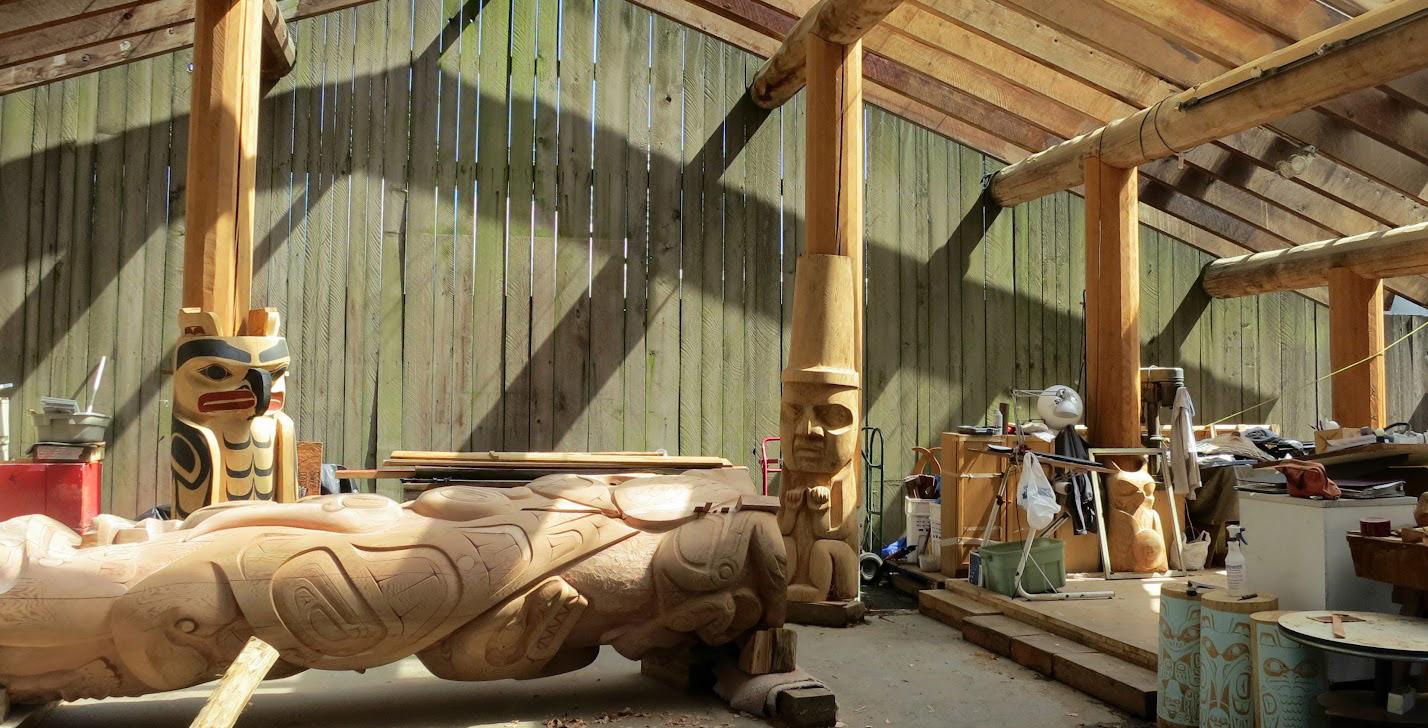
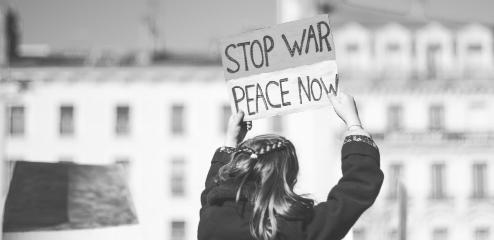

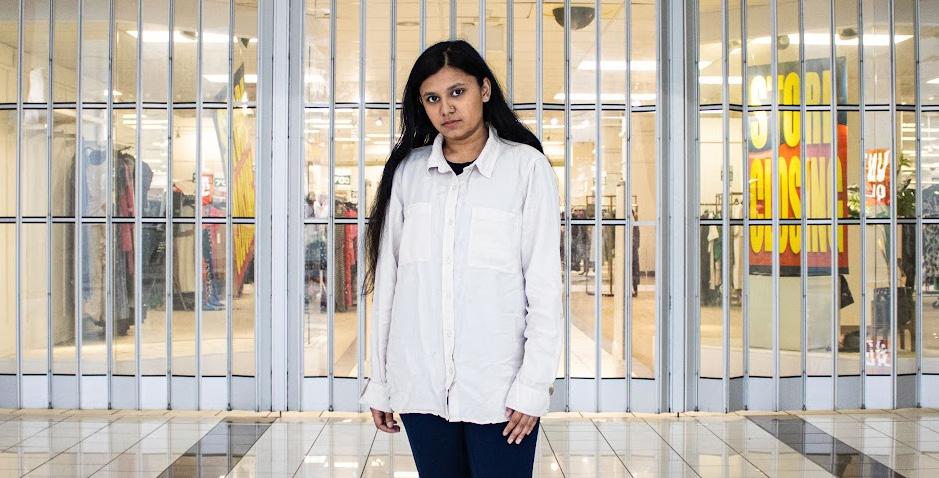
EDITORS-IN-CHIEF
C Icart and Michelle Young eic@the-peak.ca
COPY EDITOR
Michelle Young copy@the-peak.ca
FACT CHECKER
Karly Burns factchecker@the-peak.ca
NEWS EDITOR
Hannah Fraser news@the-peak.ca
NEWS WRITERS
Corbett Gildersleve and Lucaiah Smith-Miodownik
OPINIONS EDITOR
Petra Chase opinions@the-peak.ca
FEATURES EDITOR
Daniel Salcedo Rubio features@the-peak.ca
ARTS & CULTURE EDITOR
Phone Min Thant arts@the-peak.ca
HUMOUR EDITOR
Mason Mattu humour@the-peak.ca
STAFF WRITERS
Zainab Salam, Ashima Shukla, and Yildiz Subuk
BUSINESS MANAGER Yuri Zhou business@the-peak.ca (778) 782-3598
The Peak MBC2900 8888 University Dr. Burnaby, BC V5a 1S6
PROMOTIONS MANAGER
Juliana Manalo promotions@the-peak.ca
PROMOTIONS AND SOCIAL
MEDIA ASSISTANT
Jenna Emperador
PRODUCTION & DESIGN EDITOR
Abbey Perley production@the-peak.ca
ASSISTANT PRODUCTION EDITORS
Mary Gigiberia and Minh Duc Ngo
PHOTO EDITOR
Gudrun Wai-Gunnarsson photos@the-peak.ca
WEB MANAGER
Subaig Bindra web@the-peak.ca
BOARD OF DIRECTORS
Rebecca Dersey, Liam McKay-Argyriou, Yildiz Subuk, Olive Visser, and Yuri Zhou
CONTRIBUTORS
Prerita Garg, Noah Jozic, Cassandra Nguyen, Peter Runn, and Alex Traynor
PEAK ASSOCIATES
Cliff Ebora, Yan Ting Leung, Kriti Monga, and Sarah Sorochuk
COVER ARTWORK
ILLUSTRATIONS: Rania Abdulaziz
STILLS: Courtesy of Kitty Cheung, Patricia Sugiarta, and Brent Waldbillig
COLLAGE: Gudrun Wai-Gunnarsson
GRAPHIC: Minh Duc Ngo


Follow us on Instagram, at @thepeakatsfu and check out our YouTube channel, The Peak (SFU).
READ THE PEAK Pick up paper copies at any SFU campus Find extended, cited, and web-accessible articles at the-peak.ca Download digital issues at issuu.com/peaksfu
The Peak is SFU's weekly student newspaper published every Monday, by students, for students. We’re funded by a student levy and governed by a Board of Directors. Any SFU student can apply to become staff.
We reserve the right to edit submissions for length, as well as style, grammar, and legality. We also reserve the right to reprint submissions at any time, both in print and on web. We will not publish content that is sexist, racist, or otherwise prejudiced.
“TEACH, TEACH PALESTINE!”
Many youth led the rally with chants, speeches, and poems
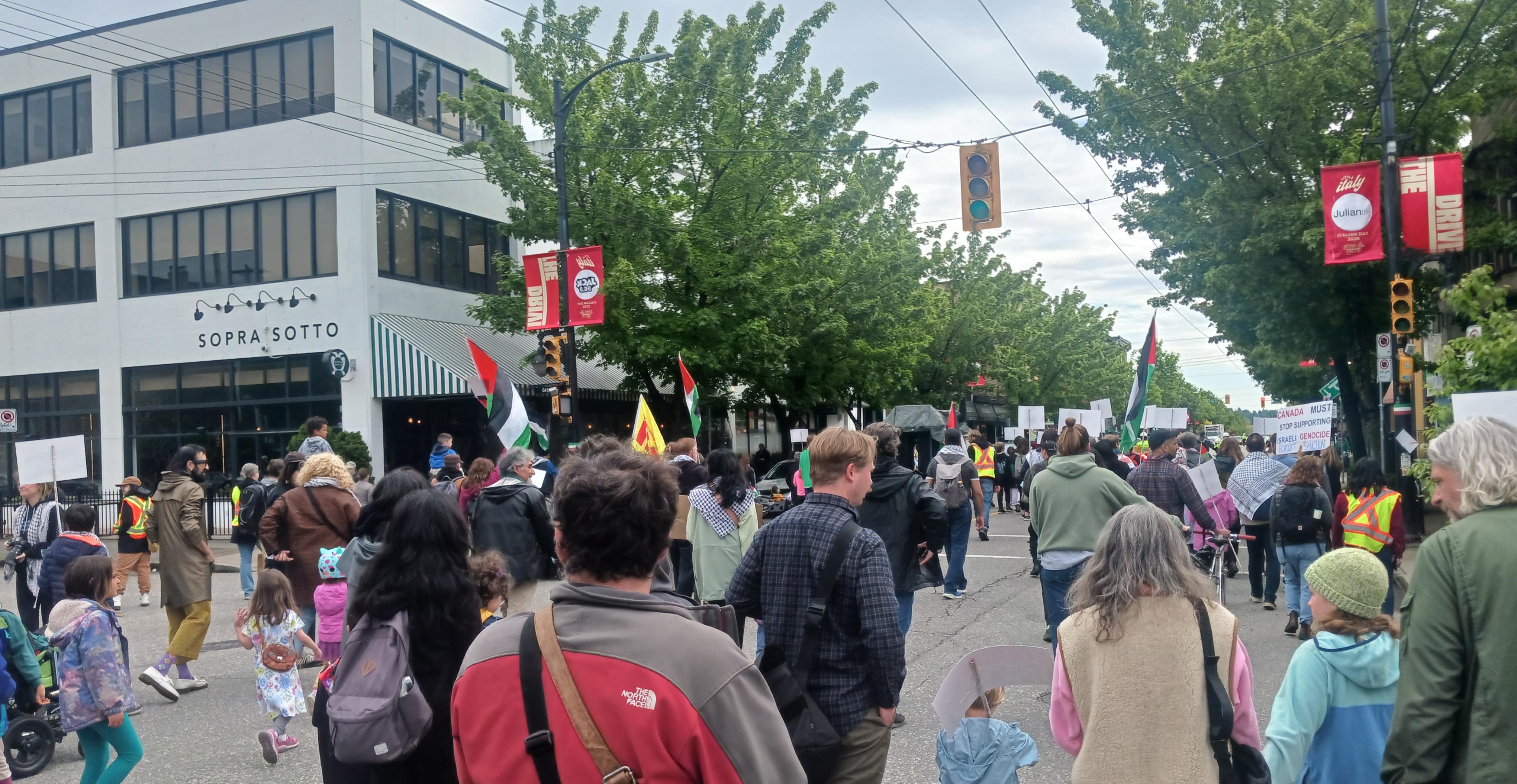
CORBETT GILDERSLEVE · NEWS WRITER
On May 10, youth, teachers, and parents from Parents 4 Palestine Vancouver rallied at Grandview Park about the need to include Palestinian history in the BC curriculum. Around 75–100 people gathered with Palestinian flags, signs, and banners, listening to opening speeches by organizers and a young Palestinian girl who led people in practice chants. The group also marched down Commercial Drive to Queen Victoria Annex Elementary.
We need to understand the truth — the truth about our history and especially as it connects today — to understand what’s going on in the Middle East.
NICOLE SPENCER
ORGANIZER, PARENTS 4 PALESTINE
The Nakba — meaning “catastrophe” — refers to the history of “mass displacement and dispossession” of “more than half of the Palestinian population” from their homes and land as of the 1948 Arab-Israeli war. 77 years later, the United Nations Relief and Works Agency for Palestine Refugees (UNRWA) estimates that more than five million Palestinian refugees exist across the Middle East, reflecting the “ongoing injustice suffered by the Palestinians.” In December 1948, the UN General Assembly passed a resolution calling for the refugees to return to their homes and receive compensation and property restitution. However, Palestinians have been continually denied these things to the present day.
The Peak attended the rally and interviewed Nicole Spencer, a Parents 4 Palestine Vancouver organizer and member of Independent Jewish Voices, to learn more about the group’s demands. Spencer stated that since last year, Parents 4
Palestine Vancouver has advocated for this history to be taught. Their petition, through Action Network, specifically calls on the BC ministry of education and child care to include the Nakba in social studies classes in public school curricula.
The petition notes that “students are asking critical questions — but classrooms lack the historical context needed to answer,” and teachers lack the tools to do so. Spencer added, “We need to understand the truth — the truth about our history and especially as it connects today — to understand what’s going on in the Middle East.”
The ministry told The Peak that between April and June 2024, they “held several engagement meetings with community groups and education partners.” After receiving feedback to include topics like the creation of Israel and Palestinian genocide in schools, the ministry stated they “will expand the grade 10 social studies curriculum in the 2025–26 school year,” focusing more “on discriminatory policies and injustices to racialized and marginalized groups in BC and around the world.” They also stated that teachers “have the professional autonomy to teach topics that fit within the curriculum.”
When asked if there’s a risk to the Nakba not being taught, Spencer said, “Absolutely, of misinformation, that people don’t know the reality of what’s happening, and that’s dangerous because we see the danger and the violence that’s happening right now.” Spencer highlighted that she didn’t learn about residential schools when she was younger, but is grateful that her children learn about it now. With the petition asking for an elementary and secondary school curriculum change, Spencer spoke about age-appropriate ways to learn about Palestine’s history and the impacts of the Nakba. One example they gave was Homeland: My Father Dreams of Palestine, written by Hannah Moushabeck and illustrated by Reem Madooh. This illustrated autobiographical book, meant for ages 4–8, tells of a father recalling his memories of the old city of Jerusalem to his three daughters. It is a place “they cannot visit,” but “will always return” to through his memory.
When asked about people being concerned that the Nakba is too heavy for young kids, Spencer said, “We have to recognize how skilled educators are at knowing how to teach these things in a way that’s safe for everyone.” For instance, with regards to residential schools, teachers can use resources provided by the First Nations Education Steering Committee for grades 5, 10, 11, and 12 to teach their students.
It’s important for me to know what happened to my people, because I want to feel proud, and I want everyone in school to know what Palestine is.
PALESTINIAN CHILD AT THE RALLY
The march from Grandview Park was energetic, with regular chants led by Palestinian youth. These chants ranged from “BC government hear our call, teach the Nakba to us all!” and “Teach, teach Palestine!” to “We don’t want no two-state, take us back to ‘48!” Their chants also included “One, two, three, four, genocide is not a war!” along with calls for a free Palestine. The march was escorted by Vancouver police, who blocked off traffic at intersections. When the marchers arrived at the elementary school, tents were set up for kid activities, including buttonmaking, face painting, and snacks.
Additional speakers read youth-written poems, shared their experiences as teachers, Jews, and Palestinians. A Palestinian child shared, “It’s important for the world to know about Palestine because it happened to my family. It’s important for me to know what happened to my people because I want to feel proud, and I want everyone in school to know what Palestine is. Then they will help, they will speak up, and one day Palestine will be free, if we teach one kid at a time about Palestine.”
Advocates worry Vancouver police are deterring access to these services
ZAINAB SALAM · STAFF WRITER
Healthcare workers and patrons in Vancouver’s Downtown Eastside (DTES) are voicing concerns that the Vancouver Police Department (VPD) is “deterring access to harm reduction sites.” Harm reduction is an “evidence-based approach to care” that minimizes harms by “preventing infections, illness, and injury related to drug use and sexual practices.”
According to a press release from the organization Police Oversight With Evidence and Research (POWER), police presence has significantly increased near harm reduction sites. POWER defines itself as a “community-led response to unaccountable institutions.”
VPD officers have been observed “parking and lingering directly outside safe consumption and healthcare sites,” allegedly violating a long-standing informal agreement between the VPD and Insite, Vancouver’s supervised injection site. POWER also claimed there is an agreement to “not enforce drug possession laws directly outside of Insite’s premises.” This contradicts VPD spokesperson Sergeant Steve Addison’s recent claim to The Tyee that there is no policy — informal or formal — “about officers parking out front of harm reduction sites.”
Caitlin Shane, a legal advocate with the DTES human rights organization Pivot Legal Society, has been seeking clarity about this issue for years. In 2022, she directly contacted the VPD and was informed that the informal policy discouraging officers from blocking access existed, but it was not going to be formalized unless a complaint was filed.
ELECTION UNCERTAINTY
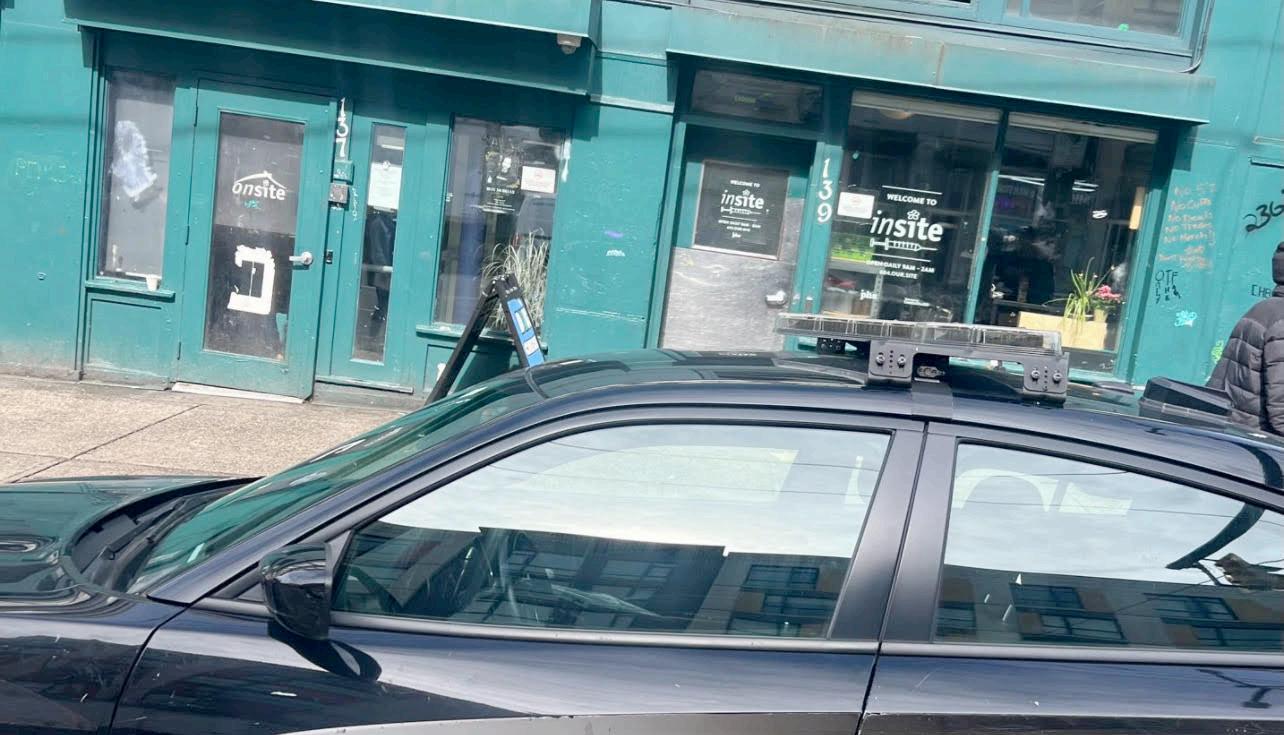
The VPD said they are currently focusing on public safety in the DTES through increased police visibility and enforcement with their Task Force Barrage. However, healthcare providers and patrons worry that this presence could discourage individuals from accessing critical health services.
This is a situation that we’ve been hearing about for years in terms of police loitering outside of sites, but definitely in the last couple of months, we’ve received an influx in reports from patrons and service providers.
CAITLIN
SHANE
LEGAL ADVOCATE, PIVOT LEGAL SOCIETY
Shane said that when police presence deters individuals from accessing harm reduction sites, they are “more likely to be using drugs alone or in back alleys, or without sterile injection equipment.” She added, “When people don’t have access to these
Vaibhav (Vee) Babbar spoke about how his name was spelled incorrectly more than once
Vaibhav Babbar, who also goes by Vee, spoke with The Peak after his lingering concerns about the election were brought to the paper’s attention by an anonymous source.
Babbar, who served as one of the associate vice-presidents of events and student affairs during the 2024/25 term, ran in this year’s election cycle but was not elected by a margin of 88 votes. He said issues around his platform commenced before the election took place. At the candidate debate, his nickname was incorrectly spelled “Veer.” At this point in the election, the mistake “was fine because I reached out to [the SFSS] and they apologized,” he said. “But then they did the same thing again in the polling ballot itself. It was supposed to be ‘Vaibhav,’ and they did ‘Viabhav,’” with the “I” and “A” switched.
“I sent them an email regarding this, and the email was ignored, and after the election, I raised concerns about this, and they just apologized,” Babbar said. “But obviously, you need to fix that right away while the election is going on, not after elections.” He also noted some of his friends did not recognize his name on the ballot. When he explained his friends’ confusion to the SFSS, they said Babbar’s friends should have recognized him as there was only one candidate beginning with a V.
It’s a big election, it’s a major university election in BC and it’s the whole student society — not a club, not a union — the whole student society.
VAIBHAV (VEE) BABBAR
VAIBHAV (VEE) BABBAR, 2025/26 CANDIDATE
“It didn’t feel like an acknowledgement of their mistake. It just felt like they’re trying to defend their position,” he said.
Babbar also raised concerns about the voting system used for the election, a topic The Peak reported on earlier this year. While individuals were able to cast more than one vote by switching browsers or using incognito mode, The Peak previously reported that “the election system has safeguards in place to ensure that each student gets only one counted vote,” according to the SFSS and the Independent Electoral Commission.
sites, they’re less able to engage in risk mitigation strategies, like using an overdose prevention site or getting sterile equipment, or having someone witness them in the event of an overdose.
“We can’t take risks like this. We need to ensure that people are getting the services that they need,” she said. “The reason why we need formalized policies is precisely so that we don’t end up in a situation like this.”
Pivot Legal Society works closely with marginalized communities to ensure their legal rights are protected. The Supreme Court of Canada has provided a legal right for individuals possessing drugs to access harm reduction sites without facing prosecution under criminal drug laws. “This is a situation that we’ve been hearing about for years in terms of police loitering outside of sites,” said Shane. “But definitely in the last couple of months, we’ve received an influx in reports from patrons and service providers.
“It’s very confusing. We’re getting mixed messages from the VPD, and it’s our belief that this is probably the most dangerous time historically to be sending mixed messages to people about what to expect when accessing a harm reduction site,” Shane expressed. A 2024 study published by BMC Medicine stated that overdoses are “the leading cause of death in BC for people aged 10–59.” CBC reported that there were “more than 2,500 deaths in 2023” related to this.
The Peak did not receive a response from the VPD by the publication deadline.

When Babbar asked for proof that illegitimate votes had been removed, the SFSS told him they could not release the raw, unfiltered polling data.
The Peak reached out to the Independent Electoral Commission for additional comment, but did not hear back by the publication deadline. SFSS also informed The Peak that they were unable to comment at the time of the article.
At the time this piece was published, the SFSS has no plans to run a re-election.
The narratives of “fighting terrorism” and “noble justice” are deceptive

Content warning: mentions of war, terrorism, and genocide.
Operation Sindoor, a military operation executed on May 7 by the Indian government, disguised murder as a “noble” act. The operation was a response to the catastrophic April 22 terrorist attack that killed 26 civilians in the Indian occupied Pahalgam in Kashmir. Kashmir is a region in the Indian subcontinent. It is also occupied by Pakistan and China. Disputes over the land have been an ongoing source of tension between India and Pakistan since their partition in 1947. Kashmiris have continually asserted their independence.
The Indian military claimed Operation Sindoor was to dismantle the terrorist groups responsible for the Pahalgam attack, and that it was targeting nine terrorist bases in Pakistan and Pakistani-controlled areas in Kashmir. However, they bombed mosques and killed at least 31 civilians, including children, and injured at least 57. They painted it as a success and celebrated its completion, as if the innocent lives of Pakistanis don’t matter.
The Pahalgam attack struck sadness, anger, and anxiety for what the tension between two nuclear-backed enemies would mean for the future. A war between India and Pakistan would mean countless more deaths, and people were rightfully scared. It is unclear whether the groups responsible for the attack were backed by or connected to Pakistan, though Pakistan denies they were. India hastily struck Pakistan without a neutral investigation, and with carelessness for innocent lives. Conveniently, the high emotions of the
Indian population were further appropriated to justify India’s destructive mission.
They bombed mosques and killed at least 31 civilians, including children.
The name of the operation itself carries symbolic value that narrate the operation as a heroic response. Sindoor is a red powder placed on the forehead of married Hindu women. The sindoor is erased once a woman becomes widowed. The traditional practice has been co-opted by the military to signify that this operation was to avenge the women whose husbands were killed in the Pahalgam attack. The video posted on Instagram by the Indian military shows a bowl with the red powder being spilled, resembling blood. The video also dramatizes the Indian army’s military procedure, with the hashtag #JusticeServed.
The Hindustan Times claimed the military dismantled “terror camps,” while The New Indian Express said the story of the operation had successes to it. The Pahalgam attack went after Hindu men, so using Hindu symbolism to launch a retaliation becomes vital when playing on the public’s emotions.
The rhetoric surrounding Operation Sindoor mirrors what Israel used after the October 7 attack in 2023. Israel claimed to be using self defense and targeting Hamas in its attacks. However, they bombed public places where civilians, women, and children were, including mosques, schools, and hospitals. Israel used the attack to their advantage to carry out the ongoing genocide. Many mainstream publications framed the deaths of innocent Palestinians as incidental, deflecting Israel’s responsibility by using language like “caught in the crossfire.” While the power dynamics involved in both issues are separate in that Israel occupies Palestine, both Israel and India depended on a similar violent rhetoric of dehumanization to sweep aside needless murder as self-defense.
India and Israel are both run by right-wing ethno-nationalist extremist parties. India had opposed the creation of the state of Israel, but in recent years, India and Israel have strengthened their ties as Indian Prime Minster Narendra Modi has popularized Hindu Nationalism. Modi was the first Indian Prime Minister to visit Israel, in 2017. It’s clear India’s Bharatiya Janata Party is following their playbook. Operation Sindoor was not conducted as a necessary defense measure, or a noble cause, but as an act of terrorism itself.

Something I appreciate about working for a small local coffee shop is we’re allowed to play whatever music we want. Unlike the corporate-stocked playlists mandated by most retail chains, at least my employer understands not having Benson Boone serenade from the ceiling 20 times a shift boosts employee morale. As long as explicit music is filtered out, my coworkers and I get to decide exactly what we want to treat our ears to. We have custom playlists we share with each other to enlighten our music tastes. If we feel like listening to Lorde’s entire discography, an 8 hour shift is the perfect opportunity to do so.
Baristas tend to have superior music taste, so our selection also increases customer satisfaction. There was that one time we got a negative review because, “It’s difficult to enjoy my latte when Sean Paul is blasting in my ears,” so my boss banned Sean Paul. Easy! I get to find out who the cool customers are when they comment on the unexpected music — or catch them shazaming it (the most mortifying thing you could be caught doing in the modern era). Music is a much better conversation starter than, “I heard it’s going to rain next week.”
I can handle being yelled at by a customer for their “no ice iced latte” not being cold enough when I can dissociate to Nemahsis or Sampha. It makes hustling through a rush or lull much more bearable when I can tune into a variety of music I actually like. And because I’m not constantly listening to radio hits on a loop, I can appreciate some of them and sprinkle them into my playlists. Hot take — “Mystical Magical” is not that bad in moderation.
BEYOND FOUR WALLS
It involves rethinking how we design learning spaces, and how knowledge is shared

ZAINAB SALAM · STAFF WRITER
A decade ago, at a seminar for newcomer youth in downtown Vancouver, an Indigenous speaker shared a powerful observation that stuck with me. He asked us to think about the shape of rooms in buildings, whether it be a hall, a bedroom, or a classroom. He noted how most rooms in buildings are angular, with sharp corners and straight lines. At the time, I hadn’t ever wondered about such a matter. Rooms were just rooms, some rectangular, others square. They were simply places to exist in and to move through.
The speaker went on to explain that Indigenous spaces are often designed to be circular, open, and relational. This helps foster dialogue and community. In contrast, the rigid, closed-off architecture of colonial buildings that dominate our landscapes reflects a worldview rooted in hierarchy and separation. This shows how colonialism is often hidden within the things we take as neutral, and it’s no different with education.
Our current education system is colonial in its design and operation, so much so that we don’t often question what alternatives exist. Eurocentric values prioritize individual achievement, hierarchical authority, and standardized measures of intelligence. Knowledge is treated as a product to be acquired. In curricula, western philosophies are positioned as universal, while Indigenous and non-western ways of knowing are marginalized. Even when diverse perspectives are included, they are often framed as “alternative,” perpetuating the myth that western knowledge is the default.
One of the core colonial landmarks is the imbalanced power dynamic between educators and students. Going back to the idea of rooms, the physical structure of lecture halls reflects a learning model where educators are positioned as authoritative sources of knowledge, while students are passive recipients. But Indigenous worldviews and ways of knowing call for a reciprocal process; one where students, educators, and communities learn from one another. This means a shift from the hierarchy to reciprocity can transform education from a site of passive consumption to one of active co-creation. Indigenous resources like Dr. Shauneen Pete’s “100 Ways: Indigenizing & Decolonizing Academic Programs” in the aboriginal policy studies journal serve as essential resources for education developers. She suggests “circle formats” and “small table groupings” as approaches that encourage dialogue, and emphasizes instructors should not expect Indigenous students to bring up Indigenous topics. This is an unfair burden, and instructors should prepare to catalyze these discussions.
Active engagement in decolonizing education means developing a decolonial consciousness; an awareness of the ways colonialism continues to shape our world and a commitment to dismantling it. Too often, efforts at decolonizing education are reduced to token gestures —
passive land acknowledgments — while the underlying colonial structures of education remain unchanged. True decolonial education should go further and dismantle these structures, like, as Pete writes, “reducing the barriers to working with traditional knowledge keepers and Elders.”
As well, rather than only having a set Indigenous curricula, professors should “be flexible enough to take up emerging local Indigenous issues as they arise.”
Decolonial education is not simply the inclusion of Indigenous knowledge within the existing colonial framework of education. It is a transformative shift in how we understand, share, and experience knowledge.
The Sylix Nation of the Okanagan Valley view place-based education as an act of resistance and resurgence, where learning emerges from land, culture, and community. These approaches disrupt the hierarchical and compartmentalized norms of settler education; instead, replacing them with modes of knowing that honour interdependence and ancestral knowledge. According to a publication by FemNorthNet, a feminist research project, decolonial pedagogies also require recognizing how colonialism intersects with race, gender, and power within educational spaces. This means true transformation must address structural inequities and systemic barriers faced by Indigenous teachers and learners. Decolonial education, therefore, is more than just an academic project; it is a pathway to healing.
The colonial structure of education and its spaces is not a coincidence. It is a deliberate legacy of the historical role of universities in promoting settler colonialism. Decolonial education is a call to reimagine learning as a reciprocal process. It is a call to change the way we structure learning. To improve how we learn, what we learn, and where we learn.
Phone Min Thant · Arts & Culture Editor
The author of this article is a Friends of Simon tutor. Following The Peak’s conflict of interest policy, this piece’s payment has been reduced.
“It’s the best job I’ve ever done,” Teagan Leong began as she described her experiences as a tutor for Friends of Simon. If you are affiliated with the SFU faculty of education, that name might ring a bell.
Friends of Simon — or FOS, as it’s more commonly called — is an award-winning tutoring project endorsed by the SFU faculty of education, bridging the gap between SFU students and the K-12 education scene in the Lower Mainland. I spoke to Leong and a few fellow tutors, asking them to share their personal stories of their times at FOS. I also got to speak with Amrit Cojocaru, the program coordinator, to learn more about the history of FOS, its functions, and its significance in the wider SFU and education communities.
Cojocaru described FOS as a tutoring and employment project, fully funded by donors such as United Way BC, with some support from SFU.
“As an employment project, we hire undergraduate students at SFU and employ and train them to become tutors to work with newcomer refugee students in a K-12 setting.” FOS began as a pilot tutoring project 19 years ago, envisioned by Paul Shaker, a former dean of the faculty of education. Cojocaru said that since then, FOS has employed around 950 tutors from SFU and worked with over 5,700 students from schools in the Lower Mainland. As she described the program’s history, Cojocaru highlighted the importance of the program’s coordinators, including Angela Flumerfelt and Kanwal Neel, who have been supervising its operations since a few years after inception.
“The work of Friends of Simon is when the tutor meets the student, and all of our administrative work goes towards that priority,” Cojocaru said. She noted how, when working with students and families who are still learning English, it’s important to “think about intention and impact.”
When asked to describe her experiences as a coordinator, Cojocaru said, “It’s soul food for me.”
The tutors themselves were more than enthusiastic to share their stories. Leong described a typical tutoring session after school: a question of the day, homework and worksheet time, and literacy activities, which are designed to improve the student’s literacy skills while keeping them engaged. Leong, who joined the program to gain hands-on experience in education, added, “I met a lot of new people through this program with similar interests of my own, careerwise.” Having started only last September, she said, “I was really nervous but ultimately all the tutors are all really helpful and are willing to give you tips,” referring to the guidance provided by lead tutors. “Just being able to make a difference in the lives of young kids is really important to me, and FOS definitely makes that possible.” When asked to reflect on her experiences in one word, Leong chose: rewarding.
Mattea Cifrek and Christopher Sit, two lead tutors who have been at FOS for over a year each, added their experiences to the mix. Sit described FOS as “a no-barriers program, so everything is free for the students who join, we don’t reject students, we don’t turn down anyone.” Sit described FOS as slightly different from a common tutoring program. “Whenever we mention what a tutor is, people have an idea that it’s a very one-on-one sit-down with them.” Sit added, “I think we are that but also a lot more than that. The idea is to provide tutoring but also a place to be.” Cifrek described it as providing “a safe space” for newcomer students after school. Cifrek mentioned that when working with other tutors, despite their differences, they share the same goal of “creating a positive and welcoming environment.” Lead tutors play a crucial role in coordinating daily plans for FOS’ sessions. As both Sit and Cirfek explained, lead tutors set semesterly schedules, assign tasks, consult with teams, write reports, and organize roundtable talks to gather feedback on issues like classroom management. Chris also said his experiences were “rewarding,” while Mattea similarly opted for “fulfilling.”
A key in FOS’ significance to SFU and the local education scene is its ability to build a community. While the program achieves this aim on a daily basis, the annual field trips to SFU really showcase the spirit of the community. I talked to Sunnie Kim, Elise Chan, and Dominion Sam, co-organizers of this year’s trip, to briefly comment on the significance of these events. “We want students to see themselves in university, or post-secondary institutions in the future because many of them are newcomers.” Chan added that exposing students to seeing their tutors in their own element on campus is a big reason why these field trips happen. Sam also said these field trips “are a way to celebrate the last two semesters of tutoring” and “just enjoy being with each other.”
Kim spoke to the impact of last year’s field trip: “having 16 schools altogether with all these students from different places, it just felt like it was just coming together and celebrating that we are a big community.”
From a collaboration with the SFU women’s soccer team to the pizza lunch, the trip was full of meaningful moments. Kim recalled a special memory, “When I saw my high school site, I could tell they were wearing their best outfits, they were talking about university and going to SFU — it was a lot of inspiring moments.” Chan agreed with Kim, saying that both tutors and students had a lot of fun. “I was a newcomer four years ago, I came here when I was in grade 11. I actually wish I could [have been] at FOS and got to experience the field trip.”
With such testimonies, it was no wonder then that when asked to choose one word to describe FOS, Cojocaru went for “community” — several other members holding similar views. The good news is that this community of tutors and educators is always hiring, so give @sfu_fos a follow on Instagram and stay tuned for more hiring drives.
ILLUSTRATION: Cassandra Nguyen / The Peak

Friends of Simon is an award-winning tutoring project endorsed by the SFU faculty of education, bridging the gap between SFU students and the K-12 education scene in the Lower Mainland.

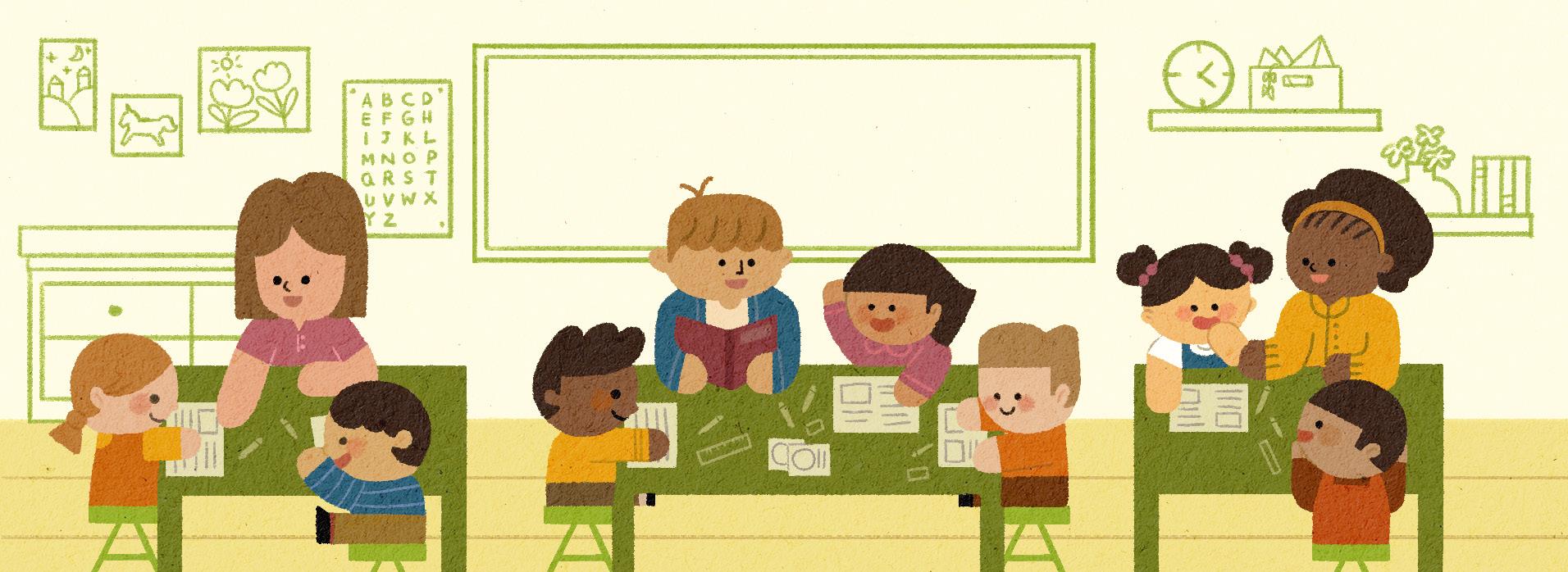
While war may speak of glory and justice, its true language is power and control
Content warning: Mentions of war, violence, and death.
We are often told war can be justified. Our history textbooks glorify national victories. Our films wrap bloodshed in orchestral scores. Our news headlines echo political speeches about defending our honour and dignity. In all these stories nations tell about themselves, we are taught that under the right circumstances, violence is not only permissible, but a noble duty. Rooted in the Just War Theory — which stretches from Roman philosophers like Cicero and Augustine to today’s Geneva Conventions and the United Nations Charter — war can be “fair” when declared by the proper authority, fought for a just cause, and with discretion. A morally palatable violence ready for society’s consumption.
In reality, war refuses to stay within these boundaries. It burns through bodies, homes, histories. In all its chaos and brutality, can war be so easily justified? Can we — should we — accept any framework that permits organized violence against an “other” as a reasonable solution to conflict? This is not to romanticize non-violence. One should question who perpetuates the violence — a controlled enforced state or those resisting erasure? Across traditions to be explored here, thinkers have acknowledged that when confronted with annihilation, violence may be a necessary form of resistance. However, in asking if war is ever justified, what is needed is discernment: a reckoning with the difference between violence as survival and violence as ideology. If our goal is justice, we must begin by asking what kind of worlds we wish to inhabit and by having the radical hope to imagine other futures rooted in interdependence, not domination.
Walter Benjamin, German philosopher and literary critic, in The Critique of Violence, explains how states hold a monopoly on violence, reserving the right to decide when force is justified in the name of preserving laws or creating new ones. What we are told is a “just” war, then, reflects not a universal morality but a project of state power — a story written by the hand that holds the gun, not those caught in its line of fire. If law itself is founded on violence — just as how several modern constitutions have been introduced as a result of revolutions, secessions, or colonial occupation — how can we trust it to regulate ethical violence? Can violence ever be ethical? Through the eyes of various philosophers, traditions, and critical theorists, let’s trace a different path.
Confronting the absurd
From an absurdist standpoint, war is not merely unjustifiable, it is a betrayal of human dignity. French philosopher Albert Camus shaped absurdist philosophy by arguing that the human condition is absurd because we seek meaning in a universe inherently devoid of it. In this light, war is an attempt to impose coherence through brute force rather than confronting the absurd with the conscious decision to live and act ethically despite the lack of a greater meaning.
Following World War II, Camus reflected in one of his essays: “People like myself want not a world where murder no longer exists [ . . . ] but rather one in which murder is not legitimate.”
His reflections reject this normalization of violence that imposes a false binary of force versus submission. Instead, he helps us realize that the choice is between force and solidarity. Writing from the ruins of war, he knew, as we must come to know, that the allure of righteous violence is just an illusion. In the promise of order and justice, what it actually delivers is grief and meaninglessness. He reminds us that we must preserve human dignity, that our longing for justice must not morph into a license to kill. Because there is no justice in death and destruction.
The wisdom of non-contention
Where absurdism teaches us to face the void with courage, Taoism invites us to dissolve the very self that clings to control, domination, and permanence. In Tao Te Ching, Laozi warns: “Weapons are instruments of fear; they are not a wise man’s tools. He uses them only when he has no choice. Peace and quiet are dear to his heart, and victory no cause for rejoicing. If you rejoice in victory, then you delight in killing; if you delight in killing, you cannot fulfill yourself.”
From a Taoist lens, then, war is not a necessary evil but a disruption to the natural order. When a nation exerts force to prove its greatness, it is already out of step with the Tao. To seek victory through domination is but a desperate attempt of the ego to preserve its attachment and delusion. Even when such a victory is achieved, the winner is spiritually diminished.
Similarly, in Buddhist philosophy, violence is born out of taṇhā (craving) and avidyā (ignorance). It arises when we attempt to impose fixed identities on what is transient: mine, yours, enemy, ally, nation, other. These labels are illusions of our separation that give rise to dukkha (suffering). In the core Buddhist text, The Dhammapada, it is said, “All tremble at violence; all fear death. Putting oneself in the place of another, one should not kill nor cause another to kill.”
This ethic of non-harm is not about passivity but rooted in compassion and interdependence. When reality is understood as everchanging and impermanent, the self becomes fluid and relational, where harming another is no different than harming oneself.
This idea of interdependence is one mirrored in many Indigenous traditions around the world. In The Dawn of Everything, scholars David Wengrow and David Graeber remind us that the idea of warfare as humanity’s default condition is a myth created by modern states to naturalize their own violence. Even when confronted with settlercolonialism, many Indigenous communities did not recognize war as an inevitable feature of human life. Instead, existence is understood as a web of relationships — between land, water, ancestors, spirits, animals, and fellow humans — where balance, reciprocity, and care are centred over domination or conquest. In this world view, violence can never be a solution because it ruptures this intricate web of being.
Decolonial scholar Achille Mbembe argues that sovereignty today is not simply the power to rule, but the power to expose others to death. To decide whose lives are expendable, whose deaths are worth grief and memory. In the name of nationhood, or democracy, people are caged, bombed, starved. The military parade becomes a celebration of technological precision. This very logic of conquest — to penetrate, to dominate, to control — echoes every day gendered performances of dominance.
Peace, then, cannot be built on the same scaffolding that upholds war. To move beyond the myth of a noble war it requires dismantling these deep roots of domination that frame conquest as justice.
Across traditions, from Camus to Laozi, Buddhism to Indigenous thought, we find not just a rejection of war but a racial re-imagining of the world where care is not weakness, but a revolutionary force.
As Anishinaabe scholar Leanne Betasamosake Simpson has argued, true resistance lies in returning to practices of care like storytelling and song that regenerate life without erasure. In rejecting righteous violence, we make space for a conception of justice that is rooted in our interconnectedness.

Writing from the ruins of war, he knew, as we must come to know, that the allure of righteous violence is just an illusion. In the promise of order and justice, what it actually delivers is grief and meaninglessness.
How a book launch for SFU alum Natalie Lim restored my faith in finding community at

On May 10, I ventured down to SFU Harbour Center in Vancouver for the first time to attend the official book launch for Elegy for Opportunity, written by the award-winning poet and SFU English alum Natalie Lim. I knew I couldn’t miss the event as soon as I read the question Lim explores in her work: “How do we go on living and loving in a time of overlapping crises?” As someone grappling with the philosophical dread of how I can continue functioning as if nothing is wrong in the world, I hoped Lim’s poetry would provide some insight and validation. I wasn’t disappointed.
Upon arrival, I quickly realized that this event was more than a celebration of Lim’s debut book. The room was packed, the energy warm and uplifting. Friends, family, colleagues, fellow writers, and academics filled every seat, eager to celebrate the esteemed poet and her work. The event opened with Mallory Tater, a four-time author and lecturer at UBC’s School of Creative Writing, who described Lim’s poetry as an expression of community kindness. This simple description resonated with me, and became evident as I read her works. Despite feeling a distinct lack of community during my time at SFU, this event gave me a glimpse of what a supportive creative circle looks like. I’ve generally felt helpless in finding any semblance of community since becoming an adult, watching neoliberalism invade social reactions — encouraging individualism, isolation, and meritocracy. In a political and economic climate where it’s everyone for themselves, building strong communities is a direct act of resistance to the systems that benefit off of us feeling detached.
Stephen Collis, the chair of SFU’s English department, took the stage next. He recounted reading Lim’s first ever published poem “arrhythmia,” a piece that explores her identity as a Chinese Canadian, and how it impressed him so much that he
encouraged its publication. She would go on to win the CBC Poetry Prize for the piece in 2018. Following Collis, Isabella Wang, author of Pebble Swing, read a poem dedicated to Lim, referencing a line from “arrhythmia” to connect their shared experiences. The tribute was emotional, making it clear that the afternoon was as much about celebrating Lim’s work as it was about honouring her connection to those around her. Lim’s long-time friend and Vancouver-based poet Tina Do also shared a piece written for her that left Lim in tears. By then, I’d already decided to buy a copy of Elegy for Opportunity. I had promised myself to engage with more art this year, and the authenticity and vulnerability of Lim’s prose felt like the kind of art I needed to support.
In a political and economic climate where it’s everyone for themselves, building strong communities is a direct act of resistance to the systems that benefit off of us feeling detached.
year service to human scientific research came to an end. Lim was struck by the collective mourning for this machine that had been programmed for the very purpose of permanent exile — this paradox spoke to her about humanity’s capacity for love and grief. Initially titled Everyone I Love is Now, Lim’s love poems in the collection explore love in its multifaceted nature, including familial love, companionate love, love for environment, and even love for non-living objects, like that we reserve for machines. During the discussion and Q&A facilitated by Mallory Taylor, Lim spoke about the duality of love and grief, describing how grief can deepen our understanding of love, especially in those moments when love seems most fragile. Before reading the first poem in her book Love Poems Don’t Win Contests, she shared how self-doubt almost kept her from publishing work that felt too vulnerable. But in the end, Lim chose to lean into that discomfort, allowing her rawest, most honest reflections to emerge.
For Lim, Elegy for Opportunity is a book for this particular moment in time, a time marked by fear, loss, and uncertainty — all the while eliciting endless moments of connection and tenderness. Created during the start of COVID-19, Lim grappled with how joy and connection can blossom in times of lockdown, and how young people increasingly fear the future due to climate crises, active genocides, and threat of facism. Despite such bleakness, the resilience of the human spirit is undeniable, and I love how this book illustrates the tumultuous burden and joy of the human experience in this age.
Elegy for Opportunity intertwines love poems with tributes for the deceased NASA space rover Opportunity. After being overtaken by a sandstorm on Mars in 2018, the robot’s 15
I feel honoured to have been in that room and to have experienced those couple hours. The event reminded me that paying attention to space and time by allowing yourself to be fully present in the moment comes with the most rewarding results.
A powerful short film confronts SFU’s
ASHIMA SHUKLA · STAFF WRITER
What started as a class project has since turned into a creative awakening for Kitty Cheung, SFU alum and former Peak staff. Bringing together poetry, live action, and illustration, the short film Ad Hominem 2 is a bold act of creative resistance on many levels. Using SFU lecturer Chantal Gibson’s poem Add Hominem, this film perfectly encapsulates the quiet discomfort of complicity.
Starring Claret Egwim-Nwagbara, the film spans across multiple SFU campuses, with scenic shots punctuated by hand-drawn illustrations — a metaphoric graffiti defacing colonial symbols — to the rhythm of Gibson’s words. These animations, painstakingly drawn frame by frame, intervene and disrupt our colonial history without erasing it. Instead, they guide the eye to interrogate the symbols we take for granted at SFU and across Metro Vancouver. As Cheung told The Peak the animations and typography were inspired by historical colonial illustrations, co-opted to visualize not just rage but also the scribbled and wild form of the poem itself.
As a viewer, the film’s cohesiveness is a testament to the deeply collaborative process of its making. As Cheung explained, each of her teammates brought unique strengths to this project. While Rania Abdulaziz was in charge of the illustrations, Brent Waldbillig focused on sound design and Patricia Sugiarta and Cheung herself worked on editing. “All four of us have filmed shots that ended up in the final film,” Cheung said. From creating the storyboard and compiling shotlists, to incorporating feedback from their classmates, the film is a product of true teamwork.
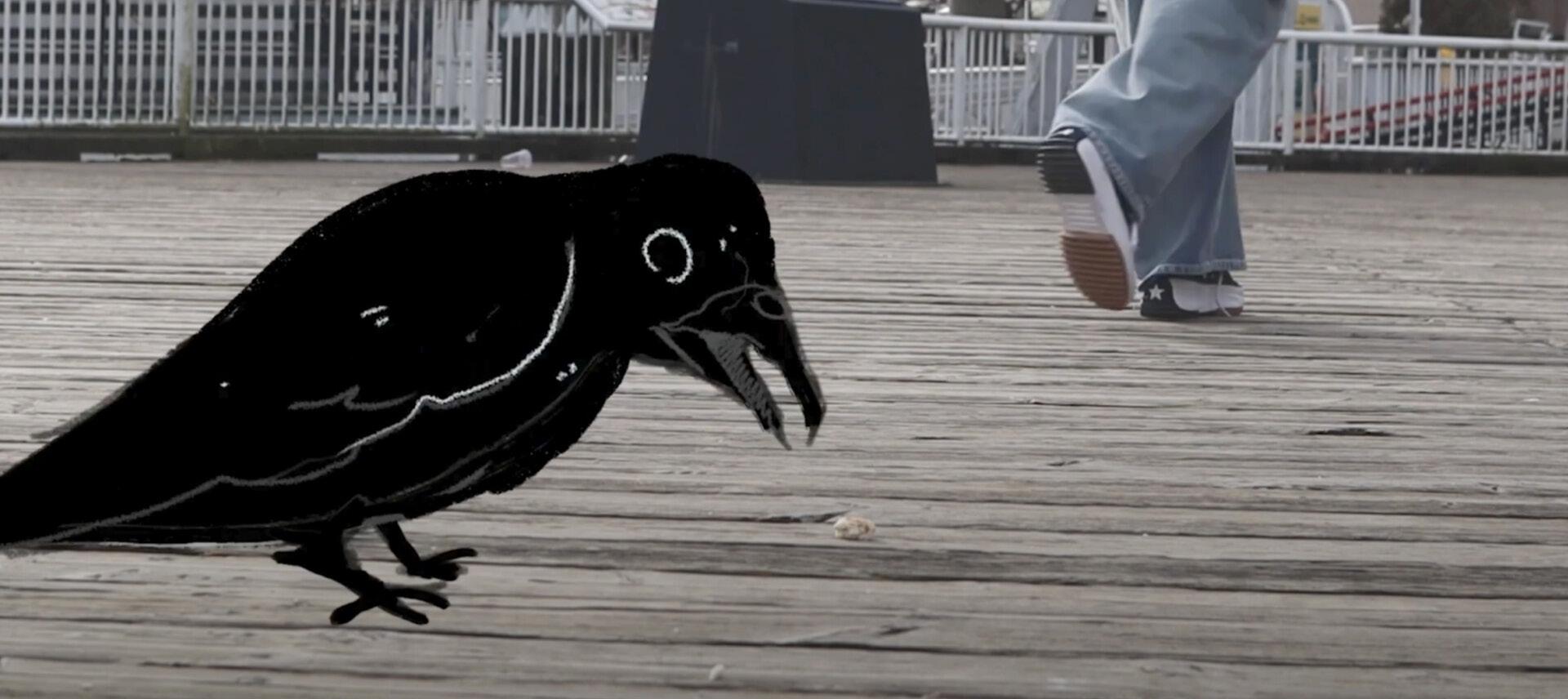
Originally created as a coursework for IAT 344 (Moving Images), the film’s visual inventiveness caught the eye of curators and judges across the globe. It has been accepted into several film international festivals, including ZEBRA Poetry Film Festival in Germany, Drumshanbo Written Word Poetry Film Competition in Ireland, Living With Buildings – VI in the UK, Midwest Video Poetry Fest in the USA, alongside a screening at the Vancouver Public Library Poetry Month Video Poems.
Cheung realised that the making of this film has allowed her to resist the “voice of capitalist society” that says “you need a proper, stable job.”
Cheung credited the “the incredibly helpful” guidance of mentors in achieving this outreach and recognition. Dr. Kate Hennessy, the instructor of IAT 344, offered encouragement and practical insight into creating festival submission packages. Also of importance to the work was Vancouver’s 2022–24 Poet Laureate Fiona Tinwei Lam, who helped the team navigate the process of adapting a poem into cinema over multiple drafts. In this, Chantal Gibson herself was
consulted early on, “to make sure our interpretations were faithful to what she was intending.” As Cheung said, “We were being careful and respectful around this conversation on colonialism, regarding my position as a filmmaker living and studying on unceded lands, and attending this university named after a colonizer.”
Upon receiving the first acceptance from Ireland, Cheung recalled, “I opened my email and just jumped out of my chair.” Aspiring to be an artist since she was a child, Cheung realized that the making of this film has allowed her to resist “this voice of capitalist society” that says “you need a proper, stable job.” Cheung confessed that discovering such worldwide awareness was “encouraging,” and motivated her to continue creating.
“To know that my existence [and] my ability to live in Metro Vancouver — while I am incredibly grateful to live here — is made possible through colonization and genocide and horrible violence is heavy,” Cheung reflected. However, to her, this is part of a “continual conversation to keep having.” Currently working on a new poetry collection inspired by Vancouver’s Chinatown and her own experience growing up among the East Asian diaspora, Cheung continues to interrogate identity, loss, belonging, and memory in her creative work. But like many emerging artists, she also finds herself negotiating the tension between passion and pressure — “the reality is, I do need a job.” However, Cheung is hopeful of finding a balance between life and work that also enables her to continue creating.
A dear friend shared this recipe with me, knowing I was struggling to cook regularly because of mental health challenges. This super easy udon is her go-to when she is low on energy. I could see it was effective right away — when she first made it for me, she had been eating udon all week! Now, whenever I’m brought down by executive dysfunction, depression, or other barriers that keep me from getting in the kitchen, I keep her recipe to heart as a reliable, convenient, and healthy meal option.
A few features make this udon stand out as a low-barrier meal:
1. Easy prep, on impulse
This udon can be prepared at a moment’s notice, using long-lasting ingredients. The easiest version, featured below, uses tofu and frozen veggies. It’s a great option if you worry that your produce will only go rotten after a bad week, or if you prefer a consistent meal plan. If you need novelty to feel good about eating, you can always vary each batch with fresh and preserved ingredients: sesame seeds, wakame seaweed, bonito flakes, mushrooms, green onions, leafy greens would all work with this recipe. Greens could be the usual spinach or kale, but my friend has even used nettles foraged from Burnaby Lake!
Many of these ingredients require no chopping, and most only need to be heated through before serving.
2. The right soup base
A delicious store-bought soup base makes the difference between this recipe and other quick soups I’ve tried. My friend introduced me to Kikkoman’s Hon Tsuyu soup base, available at T&T, which has a lovely smoky flavour straight out of the bottle. If you can’t find that soup base, feel free to swap it over to either miso paste or a vegan alternative. Do keep in mind that Hon Tsuyu and miso may contain fish.
3. Single-servings, and the right pot
Personally, I prefer a single-serving option because it makes the meal fresh every time. A surprising game-changer for me was buying a small saucepan to make this recipe. Before, the thought of using and washing a big pot was daunting enough to keep me from cooking. My gadget of choice is a Zwilling one-litre pot from HomeSense. It has a nice, heavy base, and the brand is a personal favourite, so I’m always happy to bring it out. However, as I say this, feel free to choose any cookware that will feel good to you!
Ingredients: 4 tablespoons Hon Tsuyu soup base (or an alternative, like miso)
500 ml water
1 packet udon noodles
Tofu, to taste
Frozen vegetables, to taste (eg. cauliflower, broccoli, carrot blend)

Instructions:
1. Add the soup base and water to a small pot. Bring to a boil.
2. Add noodles to the pot.
3. Slice or cube tofu. Next, stir the soup gently to untangle the noodles, then add tofu and vegetables.
4. Simmer for around 5 minutes until all ingredients are hot. Make sure the noodles have cooked for at least as long as the package indicates.
5. Enjoy!
School may be out for summer, but that doesn’t mean cool and fun things aren’t happening on campus!
LUCAIAH SMITH-MIODOWNIK · STAFF WRITER
Saturday, May 31, 5:00 p.m.
Amiddle place between world and time (the smallpatch of woods behind the softballfield)
Cost: Free, as long as you come in costume
LARPing, or live-action role-playing for those not in the know, is the activity of dressing up and acting out scenarios and worlds involving usually fictional characters. For this event, take inspiration from our beloved mascot that once was, McFogg. Pull inspiration from Scottish lore, the world of canines, or both.
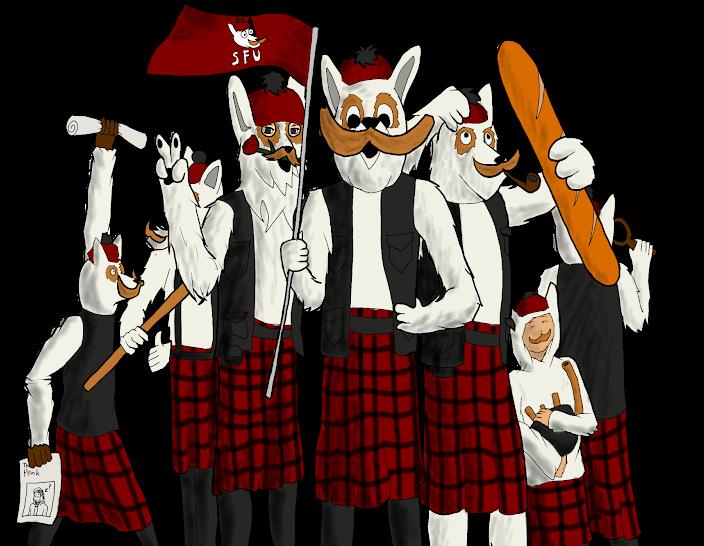
Thursday,June 5, 8:00 a.m. (scheduled to change if the event is delayed for the 100,000th time)
Anywhere but the pool
Cost: $10
Originally slated to open sooner, SFU’s pool is now on track to be ready for summer 2026. Festivities will take place in the gravel lot, with a kiddie pool and non-complimentary hotdogs — while supplies last. “The funds from the ceremony will go straight towards the pool,” said Yorn Evarswimming, head of the project.
“We would have been done sooner, but there was a little mix up and we were told to build the pool at Mayor Sim’s mansion. So we’ve kind of had to start over, but we’ll get there.”

Content warning: Mentions of forced confinement.
Monday, June 2, 12:00 p.m.–Monday, June 16, 12:00 p.m.
Saywell Hall basement
Cost: Your free will
Got nothing to do this summer? Why not spend two weeks in a dimly lit basement either locked behind bars or berating fellow students, all in the name of research? SFU psychology students are running their own rendition of the Stanford Prison Experiment right here on campus. Don’t worry, proper precautions have been taken this time to ensure that mistakes of the past are not repeated. For example, each participant will receive a $5 Tim Horton’s gift card to offset any trauma.
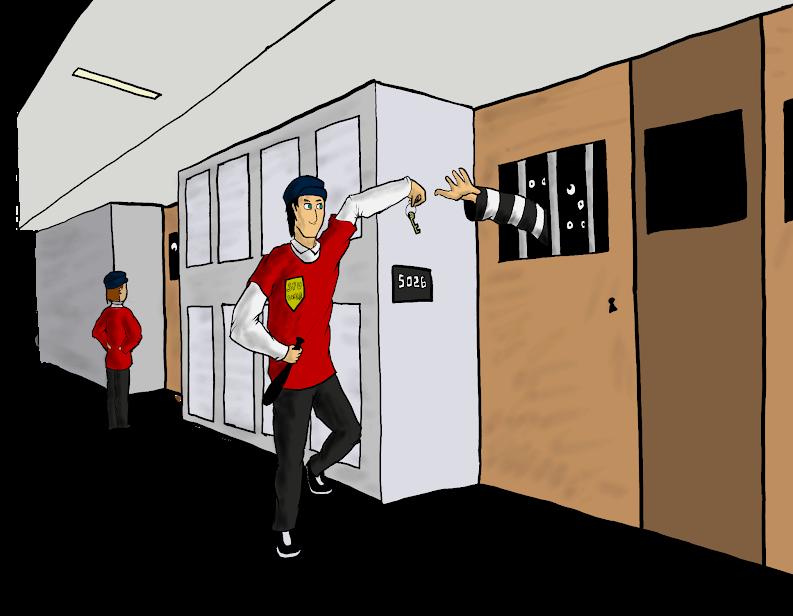
Friday, June 6, 5:01 a.m–12:44 a.m.
The R5
Cost: “Free” with Compass Card, $173 without
President Joy Johnson will be riding the R5 to and from campus all day Friday, so join for some bus karaoke!* Pick your own song or choose from a list of her favourites, including Nickelback’s “San Quentin.”
*Please note, The Peak is not liable for any injury resulting from unwanting, helpless passengers just trying to get to work.
*Failure to sing the words to your song correctly may result in a 2% tuition increase.

Dollar Tree has been caught selling squeeze bottles of mayonnaise for 25 cents a jar. What’s the reason? The scoop, or rather the spread, is within spoon’s reach. People have been making up their own theories on multiple subreddits, yet none make any sense.
After countless hours of hard work and eating mayonnaise with our fingers (hey, method acting exists for journalism too), The Peak’s investigative news team has come up with the most reasonable explanations for this phenomenon.
Teenagers have been finding that the easiest stores to rob are union-busting companies that sell cheap products. These teens of terror have begun taking over Dollar Tree locations one by one. To put an end to this crisis, Dollar Tree employees have designed a trap for these hooligans. One that sells mayonnaise as the cheapest product that they could steal. When they eventually take a lick of the mayo (because all thieves sample the product before they leave the premises) and collapse in disgust, enter the TransLink Transit Police to save the day. Don’t ask why they’re there, they don’t know either. What a cool sting operation.
When going through inventory, one employee noticed all the shelves that held mayonnaise were empty, along with all storage shelving in the back. So, they took charge of the digital ordering program. When inputting the amount to order rather than selecting 50, they misclicked, adding a few extra zeros. Totalling the order to 5,000 mayonnaise bottles — the store had no choice but to price ‘em cheap.
Was it a rookie mistake? Or perhaps a severe mayonnaise craving from a hungry employee? No whistleblowers have spoken out yet.
In recent days it has come out that the founder of Dollar Tree loved his mayonnaise. So, in honour of his memory, each store has decided to reduce the price of mayonnaise, thereby raising awareness for starting a new global holiday — Mayo Day. The goal of this price drop is to encourage shoppers to buy mayo more frequently and to respark a lost love for condiments. Ketchup has too much love coming its way and it’s time to make a change. Spread the love, not rotten tomatoes.

A couple of social media influencers on my very niche TikTok feed have cancelled mayonnaise brands for their “unethical” ingredients. The most popular #MayoNeigh? Seed oils. Influencers are ditching canola and making homemade mayonnaise from a mixture of raw milk, captured rain water from Côte d’Ivoire, and a single tear from a fossilized cow from 1300 BC. Oh, and don’t forget the beef tallow.
This could have resulted in retailers being unable to sell any mayonnaise, let alone give it away for free. Once again, they would have to price ‘em cheap.
Or if you don’t believe any of these reasons, then you can always assume the mayo they reduced was near or well past its expiry date . . . But to any other person you have to know that this is the least realistic!
Well, another one bites the dust, SFU. If you enjoyed this super cool investigation and want to see more, please e-transfer me $10. Investigative reporter out.
If you have any investigative tips for The Peak, please buy $10,000 worth of gift cards, write the tip on the back, and mail it to us.
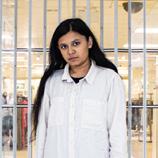
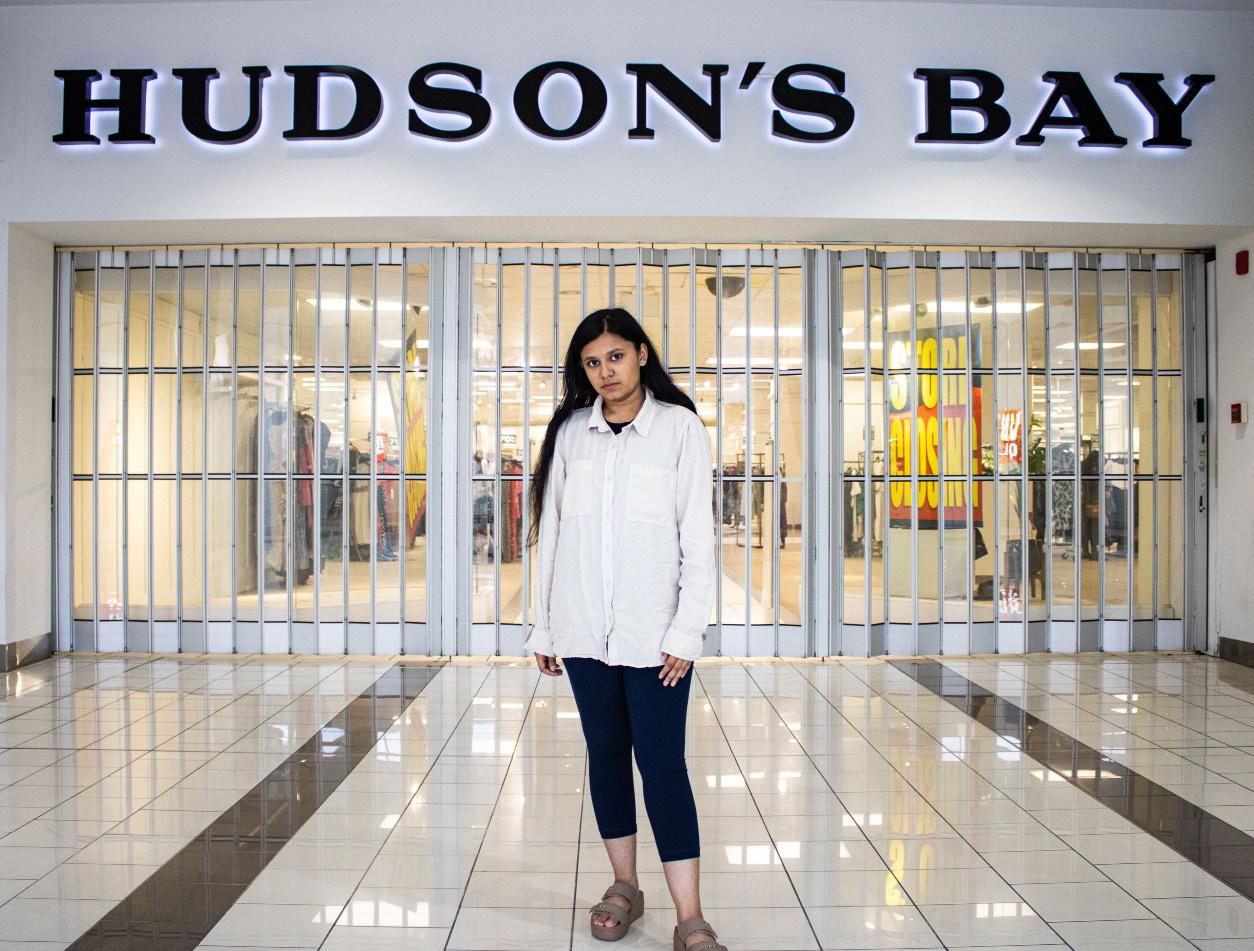
#NotClueless: I, like, totally attended the Met Gala
Today, I have to start with a confession; I was totally buggin’. Because, like, can you even imagine being personally invited to the Met Gala? Well, I could. Not to brag, but your girl over here scored a highly exclusive, VIPPP platinum ticket to the Met Gala last week. Let me tell you all about it. #LongCaptionIncominggggggg
It all began when I received a super exclusive DM from a brand that I’ve been dying to work with. And no, I’m not telling anyone the name ‘cause Y’ALL BASIC. They wanted me to attend the Met Gala as their brand ambassador. I mean, hello? As if I would ever pass up the opportunity to be photographed in my totally vintage 2010s dress while casually standing next to Anna Wintour. What’s next? Be on the cover of Vogue? #TotallyGoingToWriteThisInMyManifestationDiary #It’sTotallyGonnaHappen #YourGirlyIsAModel
The theme this year? Liquidation. So avant-garde, right? I was obsessed. I thought, what better than to represent the BC every day girly, than wearing Aritiza? TNA is everything the Met Gala stands for: class, style, and a dash of mall-culture nostalgia.
Anyway, I show up, and right away I’m thinking, wow, they really went all out with the aesthetic. Polished floors stretched endlessly, like some kind of chic runway. Mannequins are half-dressed in couture that stands dramatically under harsh fluorescent spotlights, which I assumed was a bold commentary on the fickleness of fashion. Yeah, people, my English courses came in a clutch!
There was even an escalator that wasn’t moving — clearly a metaphor for the struggle of ascending the fashion world. I was, like, totally, living for the immersive experience. I sauntered through the exhibits, which included racks of designer labels, heavily discounted by the way. I assumed it was part of the evening’s theme: liquidation. How revolutionary!
I mean, the whole thing was so authentic. Bargain bins? Stunning. Bold “Everything Must Go!” banners? Genius. And the fashion? Unbelievable. People were walking out with the oversized shopping bags, really
committing to the whole liquidation theme. I was like, this is why the Met Gala is ICONIC!
I wandered around, spotting other celebrities, SOOO many fashion seniors were there. I was like, OMG, is that a retired supermodel or the dead grandma from Up?
Of course, I did what any iconic Met Gala guest would do — I started networking. It’s the fashion business after all. You’re a nobody if you don’t know somebody! I leaned over to this one lady in an oversized fur coat (a bold choice for liquidation chic, might I add), and I was like, “So, who are you wearing?” She gave me this weird look and whispered, “Clearance rack, aisle three.” The dedication to the theme was inspiring. Another guest was clutching a garment so fiercely. The haute couture world is vicious!
The event staff was nowhere to be seen. So discreet. So minimalist. They got their NDAs on lock down.
You don’t understand, the vibes were gorgeous. They made me feel like a true icon that evening. Like, Bella Hadid? Who dat??
And, to all of my #haters who were mean in the comments. Tryna hate on me, saying, “You’ll never be famous enough to be invited to anything!” Ya’ll can suck it! I said I will be famous. And here I am, F.A.M.O.U.S..
TTYL, catch ya’ll on my next adventure. I just know it’s going to be buzzworthy. #Influencer #BCRepresentation #FeelsLikeADream #WAP
Updated 2 hours later:
To everyone saying I didn’t go to the Met Gala, and that it was actually a Hudson’s Bay, y’all are haters! I don’t pay attention to haters. #Unbothered #IAmAnIcon #VeryDemure #KylieJennerMakeupTrendTagForLikes #PleaseViral #F4F #NigerianPrinceNeeded
And to all of my fans, love you. Don’t forget to smile.
Written by Zainab Salam · Influencer




